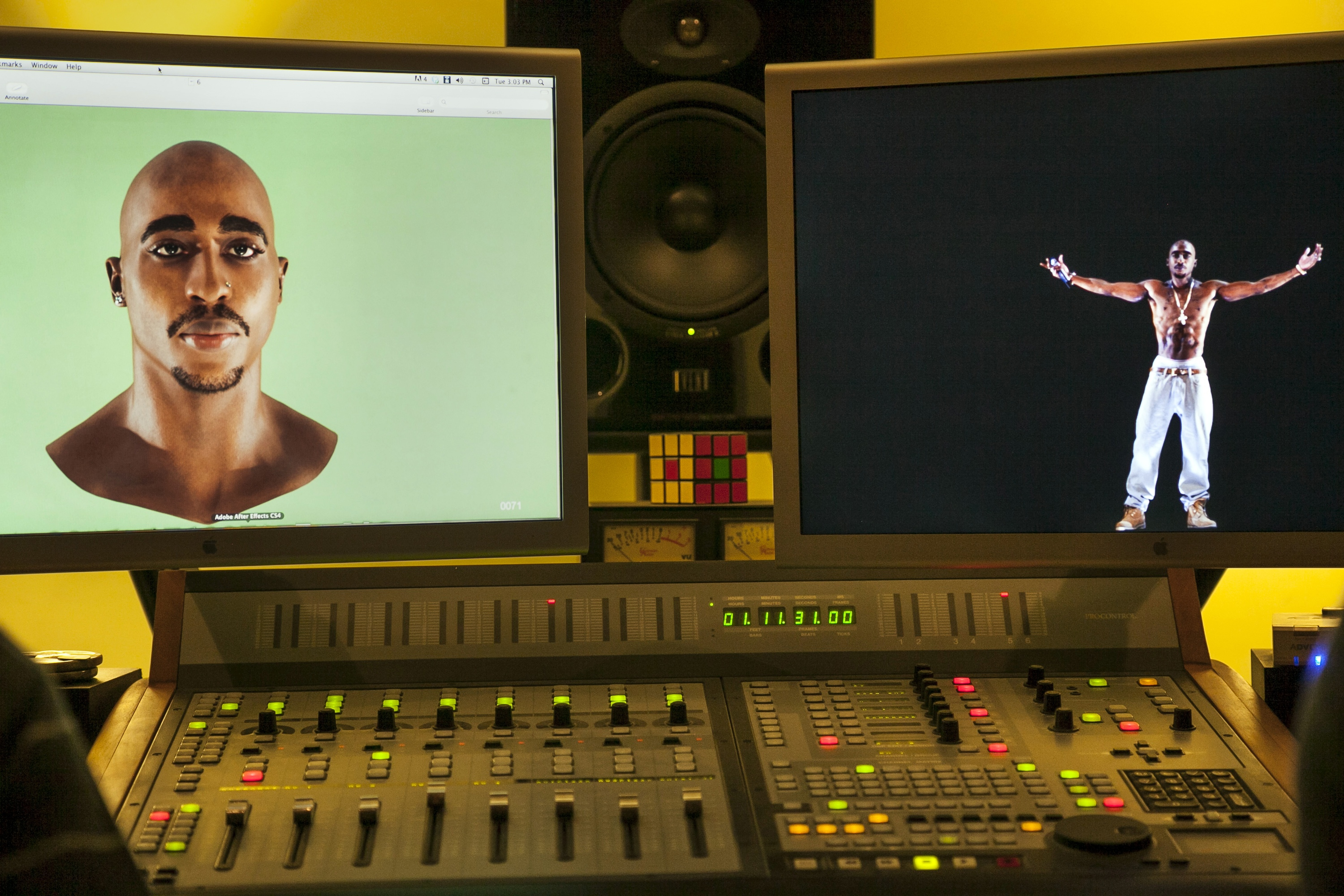Why we should embrace our holographic future
Don't scoff at holograms. In the near future, they'll help us learn, feel, and experience untold wonders.


Most of us know holograms as the stuff of sci-fi, or a weird CNN election night gambit, or a creepy way of reviving Tupac for an unsettling concert. It's easy to dismiss holograms in those ways. But in reality, the technology has a lot of potential that scientists and scholars alike are digging into.
The mysterious quality of holograms is finally dissipating. Anyone with a smartphone and some graph paper can build a makeshift hologram projector. And as holograms become more accessible, the impact they could have on how we learn is becoming more clear.
Holograms have the potential to improve our perspective on events. Imagine attending a professional baseball game and reviewing the latest play via hologram instead of the traditional Jumbotron, or even experiencing the play yourself through virtual reality. It would pose an intimate, visceral, and more nuanced way of understanding the motions and the strategy of the sport in a way we as spectators can consider now, but can't truly feel.
The Week
Escape your echo chamber. Get the facts behind the news, plus analysis from multiple perspectives.

Sign up for The Week's Free Newsletters
From our morning news briefing to a weekly Good News Newsletter, get the best of The Week delivered directly to your inbox.
From our morning news briefing to a weekly Good News Newsletter, get the best of The Week delivered directly to your inbox.
A similar innovation — and one that's closer on the horizon — is holographic Minecraft, which Microsoft showed off with its HoloLens headset during E3. Minecraft, a game largely about building whatever you can dream up, has already been lauded as an educational experience, teaching everything from spatial reasoning to literacy. Giving gamers the ability to explore the virtual worlds more vividly is bound to more thoroughly immerse them in the game's structural and physical complexities, fine-tuning their spatial skills.
Beyond giving us a better glimpse at the physics of our world, holograms, like many of the best technological advances, stand to help humans relate to each more empathetically. Two business partners want to record people speaking and present the footage at those very people's funerals, in holographic form. Creepy? Maybe. But it could also help bereaved friends and family get the closure they need. At $3,000 for a small, non-life-size projection, it'd be cost-prohibitive for most. Still, for those with cash, the concept could make for a fascinating experiment in helping people work through their grief.
Holograms are also poised to help commemorate people's lives on a global scale. The University of Southern California has been working for years on New Dimensions in Testimony, a project designed to preserve Holocaust survivors' memories, experiences, and insight for future generations. Of course, books, documentaries, and museum artifacts will also ensure survivors' voices remain heard long after their deaths, but holograms would add an invaluable interactive element.
The project's guinea pig, Pinchas Gutter, told of his Holocaust experience on camera and then answered hundreds of follow-up questions. His responses have all been catalogued, so that when someone asks hologram Pinchas a question, it'll answer with the most relevant sound byte. Matt Lauer put the technology to the test. It's hard to overstate the historical importance of this project, which will afford an opportunity to children who haven't even been born yet to engage with and learn from people who can tell them far more about the Holocaust than any textbook ever could.
A free daily email with the biggest news stories of the day – and the best features from TheWeek.com
Even the holographic performances we're used to sneering at don't have to feel creepy. Perhaps they could be used more as a way to play "witness" to a historical event than a kitschy gimmick. Maybe it'll become a way of revisiting a presidential speech delivered decades earlier, or enjoying a Tony-winning play long after it's gone dark.
Holograms aren't as out-there as they might seem. They're essentially just one step beyond video, a tool that's become commonplace in classrooms and museums. As holograms become a more integral part of our lives, they can enhance the ways in which we learn from and interact with the world around us.
Julie Kliegman is a freelance writer based in New York. Her work has appeared in BuzzFeed, Vox, Mental Floss, Paste, the Tampa Bay Times and PolitiFact. Her cats can do somersaults.



